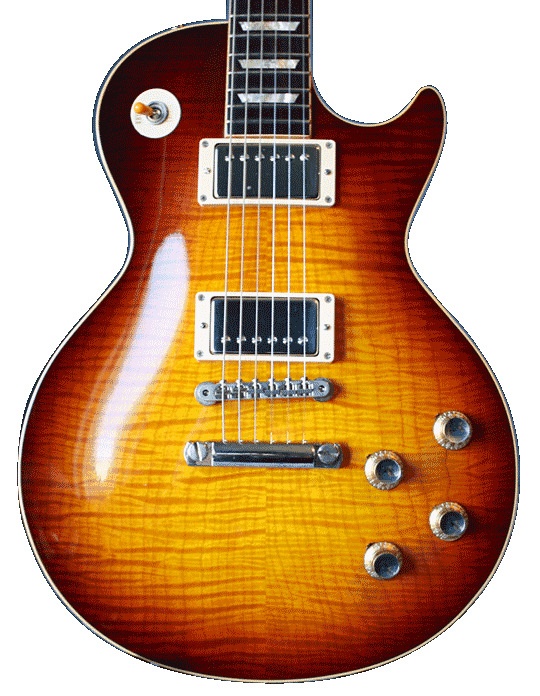
Weight is personal. It is right up there with age, salary, and taxes for the least desirable dinnertime topics, such questions or discussions will usually lead to awkward silences and hurried subject changes.
If you happen to be dining with some guitar players, there will be much talk of guitar weights. We all have our preferences and none of us has any trouble talking about that weight. From light as a feather to only the heaviest will do to everywhere in between, guitar players take their guitar weight seriously and don’t hesitate to make their own guitar weights known and compared to others. Let’s look at what makes up the heft of the average Fender Stratocaster and determine just how much they weigh.
Into the woods…
The most common woods used to make the bodies of Fender-branded Stratocasters are by far Alder and Ash. There are, of course, other woods used at various times for various reasons, but we’ll focus on these two species since there is a good chance that all of the Strats in the big store or the online retailer are one of these two. The Stratocaster began life in 1954 as an Ash guitar, and within just a few years Alder became the wood of choice because it was readily available and a bit less expensive than Ash, and Fender Stratocasters have been mostly Alder since.
A guitar body begins as a “blank”, a number of pieces of lumber glued, clamped, and heated, forming a large solid plank.
A Fender Stratocaster blank measures approximately 20” x 15” x 1.85” thick. These numbers can vary by small amounts but will be pretty close. It’s a hefty piece of wood and of course, it needs to be slightly bigger than the finished dimensions of the Strat.
From this large slab of wood goodness a Stratocaster body will be templated and cut. Much material will be removed to create the curves of the horns, the waist, and the roundness of the bottom. The neck pocket and pickup areas will be routed, along with the control cavity, the jack cavity, and the rear tremolo area. The arm contour on the front and the belly cut on the back also remove more material. Finally, the sanding of all of the edges, curves, and contours will remove the last of the blank, leaving a raw Strat body that averages between 4 and 5 pounds.
Body Parts
After a couple of ounces of paint starts the parts. The tremolo bridge and block assembly including the springs add an average of .75 pounds to the body weight, with some minor variation both up and down. A set of three single coil pickups comes in at around .75 pounds as well, but there can be some variation in that figure based on magnet alloys and wire gauge/material.
The final body parts, the pickguard with switch, pots, and knobs, the jack assembly, neck plate, strap buttons, and all the screws that go along with all that stuff all bring about another pound to the party.
The Neck
The final piece of our Strat weigh-in is the neck. A blank measuring 27” x 4” x 1” thick of usually “Rock” Maple, a plentiful, reasonably priced species, is the start. It is cut, ground, shaped, drilled, sanded, and otherwise noisily transformed into a Strat neck, either one-piece Maple or the base for a Rosewood fingerboard. After an ounce or two of finish, each type gets frets, a truss rod, tuning machines, nut, fretboard markers, some brand and model decals applied, and possibly a string tree or two. All of this neck recipe adds an average of 2 to 2.5 pounds to the Fender Stratocaster.
The Balancing Act
If you are going to hang a guitar over your shoulder and flog at it for a couple few hours of entertainment for some number of people, the weight of that guitar can matter very little to some and be a significant factor for others. Whether heavy or light, the balance and the way the guitar hangs and moves with the guitar player are equally important.
That 27” long stick screwed to the middle of the body definitely plays a part in the overall hang and balance of the Strat. The combined weight of the parts in the body can alter the distribution and affect the feel of the guitar. A center-seam two-piece body can feel perfect, but a several-piece blank consisting of inconsistent piece weights can alter the overall balance of the guitar for some. Even with such potential variations in the factors that comprise the overall balance and feel of a guitar, the Fender Stratocaster is always a well-balanced, comfortably hanging performance machine.
Drawing Conclusions
So how much does a Fender Stratocaster weigh? We’ve gone over the many variables that contribute to the weights of the parts of the guitar, and those variables tell us there is no one Strat weight. On average, a Fender Stratocaster weighs about 8 pounds. A light Strat is 7 pounds and under, while a heavy Strat is 9 pounds and up, statistics gathered in the highly unscientific arguments that have raged between guitar players since there have been Stratocasters.
If you haven’t seen it here before, it bears repeating that a guitar is the sum of its parts. No single weight is the right weight for any particular guitar player. Heavy guitars don’t all sound bad, feather light guitars don’t all sound great. Every other part and process outside of the weight contributes just as significantly to the whole thing called a Stratocaster. If you are headed to the store to try one, be sure to try as many as you can, and focus your wants and needs on the guitar as a whole. And hang it from a strap so you can feel the balance. The weight of the Strat can feel quite different on your shoulder than it does while just lifting it.
My Strat? The kitchen scale says 7.665 pounds. When I take it out for a night with the band, lift the strap over my head, turn to the mic, and get ready to go, it weighs absolutely nothing, as it has since I was a kid.
Frequently Asked Questions
How much does a Stratocaster weigh vs Telecaster?
While a Telecaster has a smaller body, it is thicker and has less material removed from the blank. The differences in body parts cancel each other out, as the Stratocaster has more parts while the Telecaster has fewer, but heavier parts. The necks pretty much cancel each other out as well. The average weight of the average Stratocaster is about 8 pounds, the same as the average Telecaster.
Is a light guitar better?
In a word, no. The word resonant is often used to describe a lightweight guitar, as though resonant heavy guitars don’t exist. The fact is that resonant, sparkly, airy-sounding heavy guitars are hanging right next to the light guitars. The weight of a guitar is just one number in the equation which is the sum of the parts, as is often repeated here. To add to that mantra, let’s say that a great guitar is where you find it. Don’t disbelieve a not-great sounding and feeling light guitar, and don’t disbelieve a great-sounding and feeling heavy guitar. The important thing is to not dismiss one or the other and to make it a point to try as much variety as access, time, and budget allow. Concentrating on only guitars that weigh less than some number could cause a great guitar that is a little heavier to go unnoticed.
Is 8 pounds heavy for a guitar?
No, it is not. As we’ve seen here, the average weight of the average Fender Stratocaster is 8 pounds, with the commonly accepted middle ground being between 7 and 9 pounds. Guitars should be tested over the shoulder on a strap as well, the pounds can feel quite different that way.
Does a heavy guitar sound dull?
No, a heavy guitar does not sound dull until a guitar player plays that guitar and decides that for him or her, it is dull. In the same store will be a guitar player determining that the guitar they are trying out is dull, and it’s lightweight. Not trying all heavy guitars because everyone knows they sound dull will only lead to the hunter missing out on what would probably have been quite a few keepers.
What does neck heavy mean?
The balance of a guitar is extremely important for live performance use. A well-balanced guitar moves well with the guitar player and doesn’t cause a change in technique or physical approach to the guitar. A light yet unbalanced guitar can spend the night trying to drop the neck away from the guitar player. This is a neck-heavy guitar, it doesn’t balance well if let go of, and while going about the business of an entertaining rock show it only gets worse. This, for some, causes a distraction from the usual physicality of the player and the guitar and can be quite annoying.
Share your thoughts in our forum! 💬
👉 Introduce yourself and show off your Stratocaster and other gear.
Share this post with your friends using these one-click sharing options:
👉 Click here to share on Facebook.
👉 Click here to share on X.
👉 Click here to share on LinkedIn.

Get the latest reviews, guides and videos in your inbox.